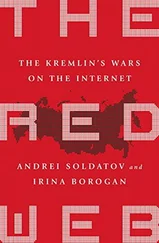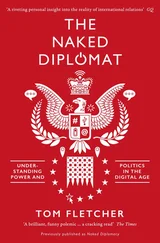Jared Cohen - The New Digital Age
Здесь есть возможность читать онлайн «Jared Cohen - The New Digital Age» весь текст электронной книги совершенно бесплатно (целиком полную версию без сокращений). В некоторых случаях можно слушать аудио, скачать через торрент в формате fb2 и присутствует краткое содержание. Жанр: Старинная литература, на английском языке. Описание произведения, (предисловие) а так же отзывы посетителей доступны на портале библиотеки ЛибКат.
- Название:The New Digital Age
- Автор:
- Жанр:
- Год:неизвестен
- ISBN:нет данных
- Рейтинг книги:5 / 5. Голосов: 1
-
Избранное:Добавить в избранное
- Отзывы:
-
Ваша оценка:
- 100
- 1
- 2
- 3
- 4
- 5
The New Digital Age: краткое содержание, описание и аннотация
Предлагаем к чтению аннотацию, описание, краткое содержание или предисловие (зависит от того, что написал сам автор книги «The New Digital Age»). Если вы не нашли необходимую информацию о книге — напишите в комментариях, мы постараемся отыскать её.
The New Digital Age — читать онлайн бесплатно полную книгу (весь текст) целиком
Ниже представлен текст книги, разбитый по страницам. Система сохранения места последней прочитанной страницы, позволяет с удобством читать онлайн бесплатно книгу «The New Digital Age», без необходимости каждый раз заново искать на чём Вы остановились. Поставьте закладку, и сможете в любой момент перейти на страницу, на которой закончили чтение.
Интервал:
Закладка:
• • •
Technological breakthroughs have offered the United States major strategic advantages in the past. For many years after the first laser-guided missiles were developed, no other country could match their lethality over long distances. But technological advantages generally tend to equalize over time, as technologies are spread, leaked or reverse-engineered, and sophisticated weaponry is no exception. The market for drones is already international: Israel has been at the forefront of that technology for years; China is very active in promoting and selling its drones; and Iran unveiled its first domestically built drone bomber in 2010. Even Venezuela has joined the club, utilizing its military alliance with Iran to create an “exclusively defensive” drone program that is operated by Iranian missile engineers. When asked to confirm reports of this program, the Venezuelan president Hugo Chavez remarked, “Of course we’re doing it, and we have the right to. We are a free and independent country.” Unmanned drones will get smaller, cheaper and more effective over time. As with most technologies, once a product is released into the environment—be it a drone or a desktop application—it’s impossible to put it back in the box.
We asked the former DARPA director Regina Dugan how the United States approaches the high level of responsibility that comes with building such things, knowing that the ultimate consequences are out of its control. “Most advances in technology, particularly big ones, tend to make people nervous,” she said. “And we have both good and bad examples of developing the societal, ethical and legal framework that goes with those kinds of technological advances.” Dugan pointed to the initial concerns people expressed about human genome sequencing when that breakthrough was announced: If it could be determined that you had a predisposition toward Parkinson’s disease, how would that affect how employers and insurance companies treated you? “What came to pass was the understanding that the advance that would allow you to see that predisposition was not the thing that we should shy away from,” Dugan explained, “but rather we should create the legal protections that ensure that people couldn’t be denied health care because they had a genetic predisposition.” The development of technological advances and the protections they will ultimately require must grow in tandem for the right balance to be struck.
Dugan described her former agency’s role in stark terms: “You can’t undertake a mission like the invention and prevention of strategic drones engineered for combat purposessurprise if you’re unwilling to do things that initially make people feel uncomfortable.” Rather, the obligation is to handle that job responsibly—which, critically, requires input and help from other people. “The agency can’t do it by itself. One has to involve other branches of government, other parties, in the debate about those things,” she said.
It is comforting to hear how seriously DARPA takes its responsibility for these new technologies, but the problem is, of course, that not all governments will approach them with similar consideration and caution. The proliferation of drones presents a particularly worrisome challenge, given the enormous benefits they bestow upon even the smallest armies. Not every government or military in the world has the technical infrastructure or human capital to support its own fleet of unmanned vehicles; only those with deep pockets will find it easy to buy that capability, openly or otherwise. Owning military robots—particularly unmanned aerial vehicles—will become a strategic prerogative for every country; some will acquire them to gain an edge, and the rest will acquire them just to maintain their sovereignty.
Underneath this state-level competition, there will be an ongoing race by civilians and other non-state actors to acquire or build drones and robots for their own purposes. Singer reminded us that “non-state actors that range from businesses like media groups and agricultural crop dusting to law enforcement, to even criminals and terrorists, have all used drones already.” The controversial private military firm Blackwater, now called Academi, LLC, unveiled its own special service—unmanned drones, available to rent for surveillance and reconnaissance missions—in 2007. In 2009, it was contracted to load bombs onto CIA drones.
There is also plenty of private development and use of drones outside the context of military procurement. For example, some real-estate firms are now using private drones to take aerial photographs of their larger properties. Several universities have their own drones for research purposes; Kansas State University has established a degree for unmanned aviation. And in 2012 we learned about Tacocopter (a service allowing anyone craving a taco to order on a smart phone, punch in his location and receive his tacos by drone), which proved to be a hoax, but is both technically possible and not far off.
As we mentioned earlier, lightweight and inexpensive “everyman” drones engineered for combat purposes will become particularly popular at the global arms bazaar and in illicit markets. Remotely piloted model planes, cars and boats that can conduct surveillance, intercept hostile targets and carry and detonate bombs will pose serious challenges for soldiers in war zones, adding a whole other dimension to combat operations. If the civilian version of armed drones becomes sophisticated enough, we could well see military and civilian drones meeting in battle, perhaps in Mexico, where drug cartels have the will and the resources to acquire such weapons.
Governments will seek to restrict access to the key technologies making drones easy to mass-produce for the general populace, but regulating the proliferation and sale of these everyman drones will be very difficult. An outright ban is simply unrealistic, and even modest attempts to control civilian use in peaceful countries will have limited success. If, for example, the U.S. government required people to register their small unmanned aircrafts, restricted the spaces in which drones could fly (not near airports or high-value targets, for example) and banned their transport across state lines, it’s not hard to imagine determined individuals finding ways around the rules by reconfiguring their devices, anonymizing them or building in some kind of stealth capacity. Still, we might see international treaties around the proliferation of these technologies, perhaps banning the sale of larger drones outside official state channels. Indeed, states with the greatest capacity to proliferate UAVs may even pursue the modern-day version of the Strategic Arms Limitation Talks (SALT), which sought to curtail the number of U.S. and Soviet arms during the Cold War.
States will have to work hard to maintain the security of their shores and borders from the growing threat of enemy UAVs, which, by design, are hard to detect. As autonomous navigation becomes possible, drones will become mini cruise missiles, which, once fired, cannot be stopped by interference. Enemy surveillance drones may be more palatable than drones carrying missiles, but both will be considered a threat since it won’t be easy to tell the two apart. The most effective way to target an enemy drone might not be with brute force but electronically, by breaching the UAV’s cybersecurity defenses. Warfare then becomes, as Singer put it, a “battle of persuasion”—a fight to co-opt and persuade these machines to do something other than their mission. In late 2011, Iran proudly displayed a downed but intact American drone, the RQ-170 Sentinel, which it claimed to have captured by hacking into its defenses after detecting it in Iranian airspace. (The United States, for its part, would say only that the drone had been “lost.”) An unnamed Iranian engineer told The Christian Science Monitor that he and his colleagues were able to make the drone “land on its own where we wanted it to, without having to crack the remote-control signals and communications” from the U.S. control center because of a known vulnerability in the plane’s GPS navigation. The technique of implanting new coordinates, known as spoofing, while not impossible, is incredibly difficult (the Iranians would have had to get past the military’s encryption to reach the GPS, by spoofing the signals and jamming the communications channels).
Читать дальшеИнтервал:
Закладка:
Похожие книги на «The New Digital Age»
Представляем Вашему вниманию похожие книги на «The New Digital Age» списком для выбора. Мы отобрали схожую по названию и смыслу литературу в надежде предоставить читателям больше вариантов отыскать новые, интересные, ещё непрочитанные произведения.
Обсуждение, отзывы о книге «The New Digital Age» и просто собственные мнения читателей. Оставьте ваши комментарии, напишите, что Вы думаете о произведении, его смысле или главных героях. Укажите что конкретно понравилось, а что нет, и почему Вы так считаете.












